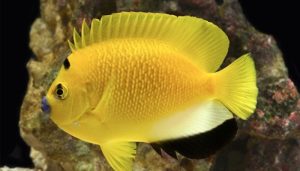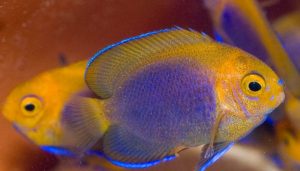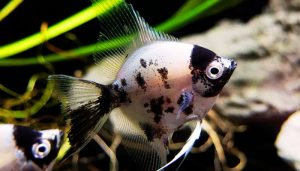If you’ve recently spotted your Red cherry shrimp with eggs, congratulations! You’re witnessing one of the most exciting phases of their life cycle. These tiny, fascinating creatures are not only a joy to watch but also a sign that your aquarium is thriving.
However, as exciting as this may seem, it often raises questions: How do you care for the cherry red shrimp eggs? What do baby shrimp need to survive? And most importantly, how can you ensure the health of both the mother and her offspring?
Whether you’re a seasoned aquarist or a beginner, caring for a berried shrimp (a shrimp carrying eggs) requires some specific knowledge and attention to detail.
From water quality and hiding spots to proper feeding techniques, there are several factors to consider to create the ideal environment for the next generation of shrimp.
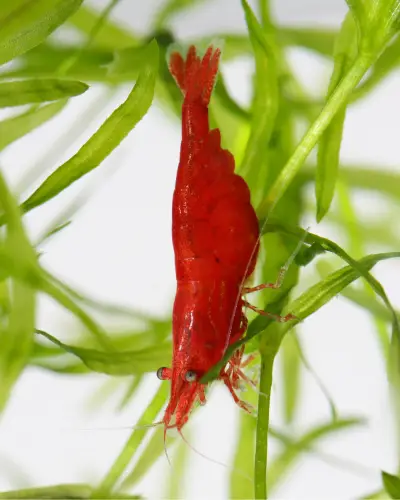
In this guide, we’ll explore everything you need to know about caring for red cherry shrimp with eggs. By the end, you’ll feel confident in your ability to provide the perfect conditions for these tiny aquatic wonders to thrive and multiply.
Let’s dive in and uncover the secrets to successful shrimp parenting!
Table of Contents
ToggleDo Red Cherry Shrimp Give Birth or Lay Eggs?
Yes, cherry shrimp lay eggs. They do not give birth to live young. The female cherry shrimp will carry her eggs under her abdomen for about 2-3 weeks until they hatch.
The eggs are initially clear but will turn dark brown or black as they mature. The female will fan the eggs with her swimmerets to keep them oxygenated and clean.
Once the neocaridina shrimp eggs hatch, the baby shrimp (called “shrimplets”) will be free-swimming. They are about the size of a grain of rice and are very vulnerable to predators. Providing the shrimplets with plenty of hiding places, such as plants and rocks, is important.
A female cherry shrimp can lay 20 to 30 eggs at a time. She can breed multiple times throughout the year. The number of eggs shrimp lays will depend on her age, health, and water conditions.
What Should You Do when Spotted Cherry Shrimp with Eggs?
When your spotted cherry shrimp are carrying eggs (also known as being “berried”), it’s an exciting time! Here’s what you should do:
1. Maintain Optimal Water Conditions:
- Water Parameters: Ensure your water parameters are stable and ideal for cherry shrimp:
- Temperature: 64-77°F (18-25°C)
- pH: 6.5-7.5
- Hardness: 5-15 dGH
- Ammonia, Nitrite, Nitrate: 0 ppm (ammonia and nitrite), less than 20 ppm (nitrate)
- Regular Water Changes: Perform regular water changes (around 25% every 1-2 weeks) to maintain water quality and replenish nutrients.
2. Provide Adequate Nutrition:
- High-Quality Food: Offer a varied diet of sinking shrimp pellets, flakes, and frozen foods (brine shrimp, bloodworms).
- Supplement with Vegetables: Provide blanched vegetables like spinach, zucchini, or cucumber for extra nutrients.
3. Minimize Stress:
- Avoid Sudden Changes: Avoid sudden changes in water parameters, temperature, or tank decorations.
- Reduce Disturbance: Minimize handling or moving the tank during the incubation period.
4. Observe and Wait:
- Incubation Period: The incubation period for cherry shrimp eggs is typically 21-28 days.
- Hatching: Once the eggs hatch, the tiny shrimplets (also called “baby shrimp” or “fry”) will be free-swimming.
Additional Tips:
- Live Plants: Live plants provide hiding places for the shrimplets, helping them feel secure.
- Sponge Filter: A sponge filter can help protect the shrimplets from being sucked into the filter intake.
- Separate Tank (Optional): If you want to increase the chances of shrimplet survival, you can consider setting up a separate breeding tank.
By following these guidelines, you can increase the chances of a successful breeding cycle for your spotted cherry shrimp and enjoy a thriving population of these beautiful creatures.
Remember, patience is key! Enjoy the process and the anticipation of welcoming new shrimplets into your aquarium.
7 Quick Tips to Successful Cherry Shrimp Breeding
1. Understanding Cherry Shrimp and Their Reproduction
Let’s understand the basics before we embark on this exciting journey of nurturing baby shrimp. Cherry shrimp, scientifically known as Neocaridina heteropoda var. red, are a popular freshwater shrimp species that come in various colors, with the red cherry shrimp being particularly popular among enthusiasts.
Cherry shrimp are known for their fascinating reproductive behavior. Female shrimp carry eggs under their tail, known as a “saddle,” these shrimp’s eggs can develop into tiny, adorable hatchlings under the right conditions.
2. Creating the Optimal Environment
To encourage successful breeding, providing the right conditions in your shrimp tank is crucial. Maintaining stable water parameters, including temperature, pH, and hardness, is essential. Aim for a temperature around 72-78 degrees Fahrenheit (22-26°C) and a pH level of 6.5-7.5.
3. The Mating Process and Fertilization
When the time is right, female cherry shrimp release pheromones to attract males for mating. Once a male shrimp mates with a female, he fertilizes the eggs under her tail. The fertilized eggs turn a darker color, indicating successful fertilization.
4. Eggs Development and Care
The female shrimp will carry the fertilized eggs under her tail for about three to four weeks. It’s important to provide the shrimp with a healthy diet of biofilm, algae, and plankton to ensure the eggs receive proper nutrition.
5. The Exciting Hatching Process
As the eggs develop, you’ll notice subtle changes in their egg color and appearance. The eggs will darken and eventually turn a dark black or brown color. This is a sign that the eggs are close to hatching. Patience is key during this phase, as the hatching process can take a few hours to a day.
6. Welcoming the Newborn Shrimp
Once the eggs hatch, you’ll be greeted with tiny, translucent baby shrimp. These young shrimp are incredibly delicate and require a gentle environment. Maintain stable water parameters and provide hiding spots for the baby shrimp to find safety.
7. Ensuring Survival and Growth
Various factors, including water quality, temperature, and food availability, can influence newborn shrimp’s survival rate. Keep in mind that baby shrimp are quite small and might require specialized shrimp food or crushed flakes to ensure they receive adequate nutrition.
How to Tell if Cherry Shrimp is Pregnant?
If you have cherry shrimp in your aquarium and suspect one of them may be pregnant, there are a few signs you can look out for. First, check the shrimp’s abdomen. A pregnant cherry shrimp female will have a rounder and larger abdomen than the males.
Another sign to look for is the presence of a saddle. A saddle is an orange or yellowish patch on the back of the female shrimp. This saddle is a cluster of green eggs waiting to be fertilized.
Once the shrimp eggs are fertilized, they will develop into a darker shade and become visible inside the saddle. Finally, keep an eye out for tiny white dots that appear on the female shrimp’s abdomen. These dots are the eggs, and they will hatch into baby shrimp after a few weeks if suitable conditions are suitable.
How Long Do Red Cherry Shrimp Carry Their Eggs?
Cherry shrimp, a popular freshwater aquarium shrimp, are known for their ability to reproduce in captivity. After mating, the female cherry shrimp will carry the eggs underneath her body until they hatch.
The time that cherry shrimp carry their eggs can vary, ranging from two to four weeks. During this time, the female shrimp carefully tends to the eggs, ensuring they receive sufficient oxygen and protection from predators.
It is fascinating to observe the development of the shrimp eggs as they gradually change color, indicating that the hatching process is nearing. Once the eggs hatch, tiny juvenile shrimp emerge, completing the reproductive cycle.
Cherry shrimp are highly prized for their vibrant red color and peaceful demeanor, making them popular among aquarium enthusiasts.
How Often Do Cherry Shrimp Lay Eggs?
Cherry shrimp, or Neocaridina shrimp, are freshwater shrimp commonly kept in aquariums. They are known for their bright red coloration, hence the name “cherry” shrimp. When it comes to reproduction, cherry shrimp lay eggs regularly.
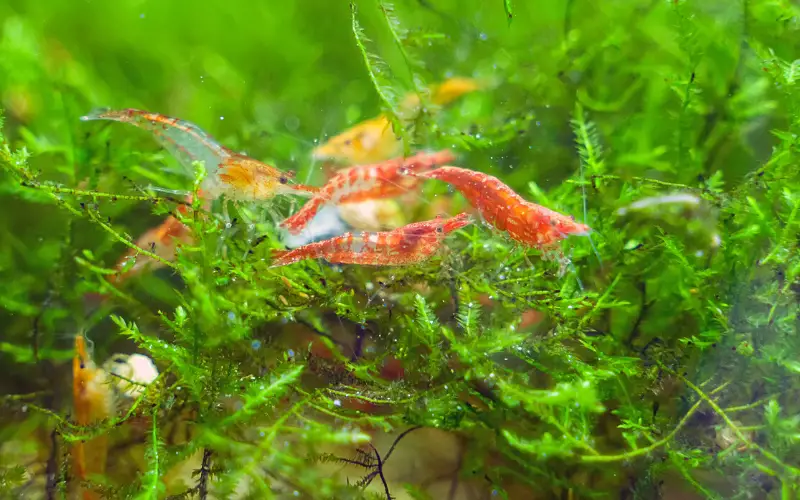
A mature female red cherry shrimp can lay eggs once every three to four weeks. The survival rate of these eggs greatly depends on the conditions provided in the aquarium. Once the eggs hatch, baby shrimp emerge and begin their journey to adulthood.
Cherry shrimp can breed every 3-5 months if favorable conditions are present. During the breeding cycle, the female shrimp releases hormones into the water, mate with the male shrimp, lay their eggs, and repeat the process. Overall, the reproduction rate of cherry shrimp is relatively high, making them popular among aquarium enthusiasts.
How Many Eggs Do Cherry Shrimp Lay?
Cherry shrimp, known as Neocaridina heteropoda var. “red,” are prolific breeders. They are known to lay many eggs, typically around 20 to 30 at a time. The female shrimp carry the eggs until they hatch, which usually occurs after two to three weeks.
However, it’s important to note that not all eggs will hatch successfully. The survival rate of the shrimp larvae depends on various factors such as water parameters, food availability, and overall shrimp health.
The survival rate can be relatively high in optimal conditions, resulting in many cherry shrimp offspring. These tiny creatures are fascinating to observe and breed as their breeding habits and ability to reproduce ensure a continuous population in home aquariums.
Do Cherry Shrimp Care for Babies?
Cherry shrimp, also known as Neocaridina heteropoda, care for their babies. After mating, the female cherry shrimp attaches the eggs to her swimmerets until they hatch.
This process usually takes around three to four weeks. Once the eggs hatch, the newborn shrimp are tiny replicas of their parents and are fully capable of fending for themselves.
However, they stay close to their mother for some time, benefiting from her presence and protection. As they grow, the baby shrimp molt several times to accommodate their increasing size.
To ensure proper cherry shrimp care, the aquarium shrimp needs to have plenty of hiding spots, plants, and moss for the newborn shrimp to take refuge in.
Additionally, it is essential to provide a well-balanced diet for the small shrimp, including specialized shrimp food or algae. With proper care and a suitable environment, cherry shrimp can successfully breed red cherry shrimp and care for their babies in an aquarium.
Pregnant Cherry Shrimp Stages
Cherry shrimp, scientifically known as Neocaridina heteropoda var. red, are a popular freshwater shrimp species in the aquarium hobby. If you’re interested in cherry shrimp breeding, it’s important to understand the various stages involved in the pregnancy of female cherry shrimp. Here’s a breakdown of the key stages:
- Saddle Formation: Female cherry shrimp exhibit a saddle-shaped structure called a “saddle” on their backs, resulting from eggs developing within their ovaries. This is a visible sign that the female shrimp is preparing for reproduction.
- Mating: In the next stage, the female shrimp will be receptive to mating. Male shrimp will approach the female and transfer sperm to fertilize the eggs inside her. Successful mating will lead to the fertilization of the eggs.
- Egg Development: After successful fertilization, the female cherry shrimp will carry the fertilized eggs with her until they hatch. The eggs will be visible beneath her abdomen, appearing as small clusters or berries.
- Hiding and Protection: The female shrimp will become more protective and cautious as the eggs develop. She may retreat to hiding spots within the aquarium, such as plants, decorations, or crevices, to safeguard the developing eggs from potential predators.
- Release of Shrimp Eggs: Once the eggs have matured and are ready to hatch, the female shrimp will release them into the water. These tiny shrimp eggs will be suspended in the water column or attached to surfaces using a sticky substance.
- Hatching: The shrimp eggs will hatch into miniature larvae, which are initially very small and almost transparent. These larvae have yet to develop and have different dietary requirements than adult shrimp.
- Feeding on Biofilm and Plankton: Newly hatched shrimp larvae will instinctively seek out biofilm and plankton present in the aquarium water as their primary source of nutrition. Biofilm is a slim layer of microorganisms that naturally grows on surfaces within the tank. Providing enough biofilm and plankton is crucial to the survival of the shrimp larvae during this early stage.
- Growing and Development: Over the following weeks, the shrimp larvae will undergo multiple molts as they grow and develop. They shed their exoskeleton with each molt and emerge slightly larger and more developed.
- Transition to Miniature Shrimp: As the larvae grow and molt, they will gradually resemble miniature adult cherry shrimp. Their coloration will become more distinct, and they will start displaying behaviors typical of adult shrimp.
Understanding cherry shrimp’s breeding cycle and pregnancy stages is essential for successfully raising healthy generations of these fascinating aquatic creatures. Providing a suitable environment, sufficient food sources, and proper care will contribute to successfully breeding cherry shrimp in your aquarium.
Caring for Cherry Shrimp with Eggs
Taking care of pregnant cherry shrimp requires special attention and consideration. These vibrant-colored shrimp are known for their ability to reproduce quickly in the right conditions.
To ensure successful breeding, it is crucial to maintain proper water parameters in the shrimp tank. This includes keeping the water clean and providing ample algae as a food source.
Pregnant cherry shrimp may become aggressive towards other shrimp in the colony, so it is advised to separate them in a separate breeding tank. The gestation period of cherry shrimp varies, but it typically lasts around 30 days.
The female shrimp will mate and carry the fertilized eggs until they hatch during this time. It is vital to provide a suitable environment with sufficient hiding spots and shrimp food to support the development of the fry.
By understanding and implementing the necessary steps for pregnant cherry shrimp care, enthusiasts can enjoy a thriving and flourishing aquarium.
Commonly Asked Questions About Red Cherry Shrimp Eggs (FAQs)
How often do cherry shrimp lay eggs?
Female cherry shrimp can lay eggs once every few weeks under the right conditions.
What do baby shrimp eat?
Baby shrimp feed on biofilm, algae, plankton, and specialized shrimp food designed for their tiny size.
Can I keep cherry shrimp with other fish?
While cherry shrimp can coexist with some peaceful fish, it’s important to choose tankmates that won’t prey on the shrimp or compete for their food.
How many eggs can a female shrimp carry?
A female shrimp can carry 20 to 30 eggs under her tail.
Are there any specific tips for ensuring a high survival rate among baby shrimp?
Providing stable water parameters, offering hiding spots, and supplying proper nutrition are key to ensuring the survival and growth of baby shrimp.
How to tell if cherry shrimp eggs are fertilized?
Fertilized cherry shrimp eggs will darken in color and eventually develop cherry shrimp eggs with eyes visible through the egg casing. 1 Unfertilized eggs will remain clear and eventually fall off the shrimp.
What do cherry shrimp with eggs look like?
Cherry shrimp eggs are small and transparent. They are usually attached to the female shrimp’s abdomen, forming a cluster. The eggs are spherical and can be easily distinguished from unfertilized eggs.
How long will it take for cherry shrimp eggs to hatch?
It generally takes 2 or 3 weeks for cherry shrimp eggs to hatch. The exact time might vary depending on the water temperature and other environmental conditions.
How can I breed red cherry shrimp?
You will need male and female shrimp to breed red cherry shrimp. Create a suitable tank environment with plenty of hiding places and a stable water temperature. The female shrimp will carry the eggs until they hatch, and the breeding process will occur naturally.
What should I do with the eggs once my shrimp lays them?
It is best to leave the eggs undisturbed with the mother shrimp. She will move the eggs to a safe location and take care of them until they hatch. Attempting to move the eggs yourself may cause damage or stress to the mother shrimp.
Can cherry shrimp lay unfertilized eggs?
Yes, it is common for cherry shrimp to lay unfertilized eggs. This can happen if a female shrimp has not mated with a male shrimp or the eggs were not successfully fertilized during the breeding process.
How can I help the eggs to hatch successfully?
To help the eggs hatch successfully, providing a stable and suitable tank environment is important. Maintain proper water quality, temperature, and provide hiding places for the mother shrimp and eggs. Avoid disturbances or sudden changes in the tank that may stress the shrimp or disrupt the hatching process.
What happens to the male shrimp after the eggs are laid?
After the eggs are laid, the male shrimp’s role is complete. He has no further involvement in caring for the eggs or the hatching process. The female shrimp will take care of the eggs until they hatch.
Can I separate the eggs from the mother shrimp?
It is generally not recommended to separate the eggs from the mother shrimp. The mother shrimp knows how to care for the eggs and will provide the necessary nurturing conditions. Separating the eggs may lead to a lower chance of successful hatching or harm to the eggs.
What should I do if the eggs do not hatch?
If the eggs do not hatch after the expected period, it is possible that they are not viable. In such cases, waiting and observing for a little longer is best. If the eggs remain unchanged for an extended period, likely, they will not hatch. At that point, you can remove the eggs from the tank.
Conclusion
Breeding cherry shrimp and witnessing the hatching of their eggs is a truly rewarding experience for any aquarium enthusiast. Understanding the intricacies of shrimp reproduction, creating a suitable environment, and providing proper care is essential for a successful breeding journey. In the intricate underwater world of aquarium enthusiasts, the wonder of new life takes center stage with the captivating sight of cherry shrimp with eggs. These tiny creatures have proven to be a mesmerizing addition to any tank, offering their vibrant color and a sense of thriving vitality.
As we’ve explored the nurturing care and optimal conditions required for these shrimps to reproduce successfully, it’s evident that a delicate balance must be struck. The sight of those tiny eggs nestled among the dwarf shrimp speaks to the harmonious relationship we’ve developed with nature in our own living spaces. So, whether you’re a seasoned hobbyist or just dipping your toes into the aquatic realm, cherishing the miracle of cherry shrimp with eggs reminds you of life’s beauty and fragility in its most intricate forms.
You might also like
- Shrimp Breeding Setup 101 (Setup, Size, Mates & Requirements)
- Red Cherry Shrimp Breeding: 5 Hacks for Rapid Success!
- Freshwater Shrimp Breeding 101: (A Comprehensive Guide)
- Do Shrimp Eggs Hatch All at Once? The Answer Will SHOCK You!
- Do Shrimp Molt Their Skin? 3 Surprising Facts About Molting!
- What Do Cherry Shrimp Eat: 7 Astonishing Foods They Crave!
- Ideal Neocaridina Shrimp Water Parameters: Boost Growth 3x Faster
- Caring for Cherry Shrimp 101: A Comprehensive Beginner Guide
- Pregnant Cherry Shrimp: 3 Easy Secrets to Healthy Babies!
- How Many Times Do Cherry Shrimp Molt: A Comprehensive Guide
- How Long Do Cherry Shrimps Live for: Shocking Truth Revealed!
- Female Cherry Shrimp Saddle: 3 Proven Signs of Pregnancy!
- Orange Sakura Shrimp 101: Price, Care, Breeding & More


